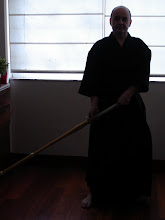Whatever martial art you train, be it traditional such as Aikido or Karate, or a modern combat system such as Krav Maga or Systema, you will be called upon to practice with a partners or partners at training. Here are a few tips on how not to be the person there that no one wishes to train with.
1, Don’t hurt people, Sounds pretty simple, yet sadly this happens from time to time in training centres. There are times when it is a pure accident and there is little that can be done about it. Yet when it happens because someone is careless that reflects poorly on both the student and the instructor that allows it to continue. It is also generally the fastest way for a club to lose students. People rarely get injured if everyone at training focuses on genuinely respecting their training partner.
2, Remember you partner is allowing you to use their body for practice, – show respect accordingly. Bear in mind that it is a privilege, not a right for another student to offer to train with you. There is no onus on anyone to train with someone if they do not wish to. When I trained Krav Maga there was a student there that had caused three separate injuries to people and as a result when we were asked to pair up for techniques no one would pair up with him.
3, Let your Sensei / Instructor teach your training partner during practice, It is great that you may have a desire to offer help and to repoint your partners technique on the mat. Common sense needs to apply here, it is the job of your Sensei / Instructor to teach your training partner and to repoint their techniques. Whilst you may be quite genuinely wishing to help, often it can be taken in a different way. It is generally okay to offer mild critique, yet its a better idea to let your Sensei / Instructor take it any further. It can also happen that the technique that you are demonstrating may also not be done in the way that your Sensei wishes to teach it.
4, Try to keep talking on the mat to a minimum, It is quite okay to discuss technique on the mat and material associated with how you are going about your technique. Yet its another thing to engage people in unrelated conversations on the mat. All people are different and a number of people like to zone in to their training on the mat. If you wish to discuss Australian Rules Football, your recent trip to Bali or anything along those lines, it is best left off the mat. Your partner may not be as quite as interested or appreciative of it as you may think.
5, Try to pull back on displays of strength / aggression in your techniques. I know of a specific Aikido teacher who appears to have some issues with his small stature, as a result he liked to throw in every bit of extra effort to finish off his techniques to demonstrate just how great his arm locks and so forth work and how painful they can be applied.. I have not seen him in a while and know that several of his students have left with a senior student to start their own club after they got sick of it. (See pt 1). You do not need to prove your strength in every single technique that you do.
There will be people at your Dojo / Training Centre that come from all manner of backgrounds and levels of experience. If you focus on showing genuine respect and support for your training partners it will go a long way in your club. Whilst these tips are about showing respect on the mat, you can also show respect and have a great time together socially by doing as we do in Australia and heading over to the pub for a beer after training where you can discuss as much Aussie rules football as you please! Its quite okay to hang out with your mates after training in a relaxed atmosphere, but hit the zone for training on the mat. Again, try letting old fashioned common sense be your guide.
 Matsumoto Toshio sensei talked about the sole of the left foot being at a 15% angle from the floor, with the left leg being almost straight and keeping a feeling of tension behind the left knee. If you follow this advice then it is possible to move instantly from any spot. You of course need to keep the distance between your feet constant throughout your keiko, moving the left foot into position whenever your right foot moves, but you should be able to stop at any given time and instantly launch from the back foot.
Matsumoto Toshio sensei talked about the sole of the left foot being at a 15% angle from the floor, with the left leg being almost straight and keeping a feeling of tension behind the left knee. If you follow this advice then it is possible to move instantly from any spot. You of course need to keep the distance between your feet constant throughout your keiko, moving the left foot into position whenever your right foot moves, but you should be able to stop at any given time and instantly launch from the back foot.
